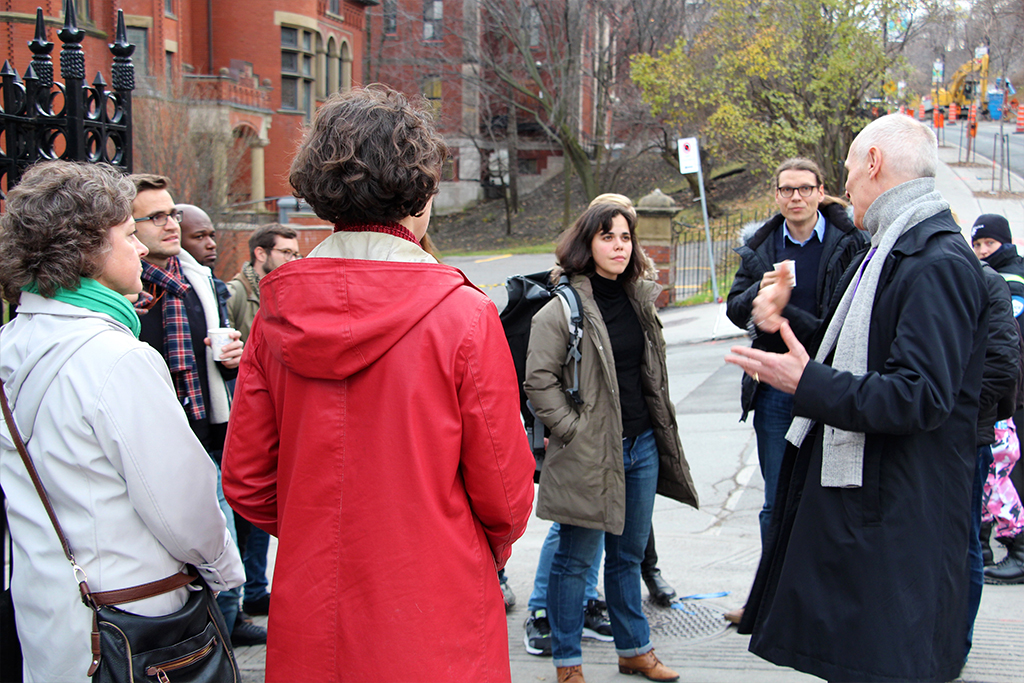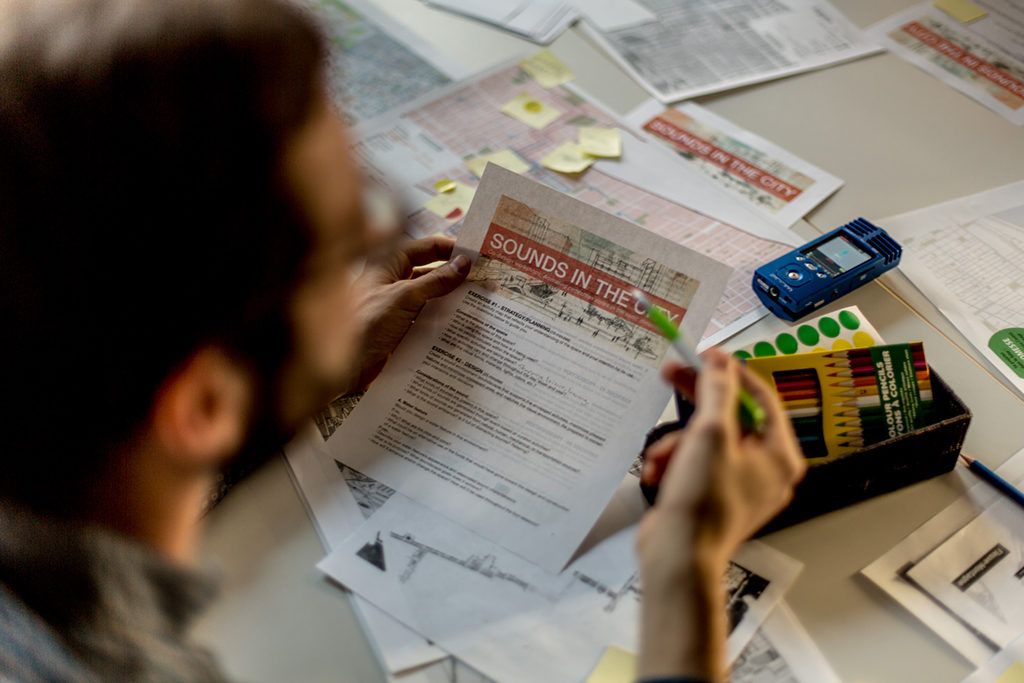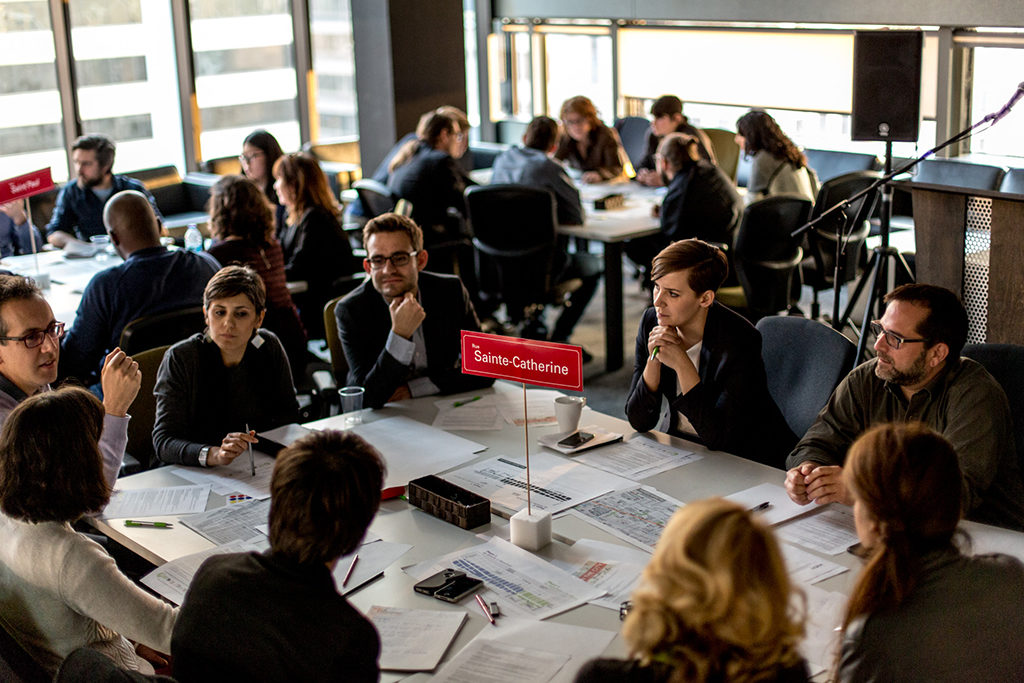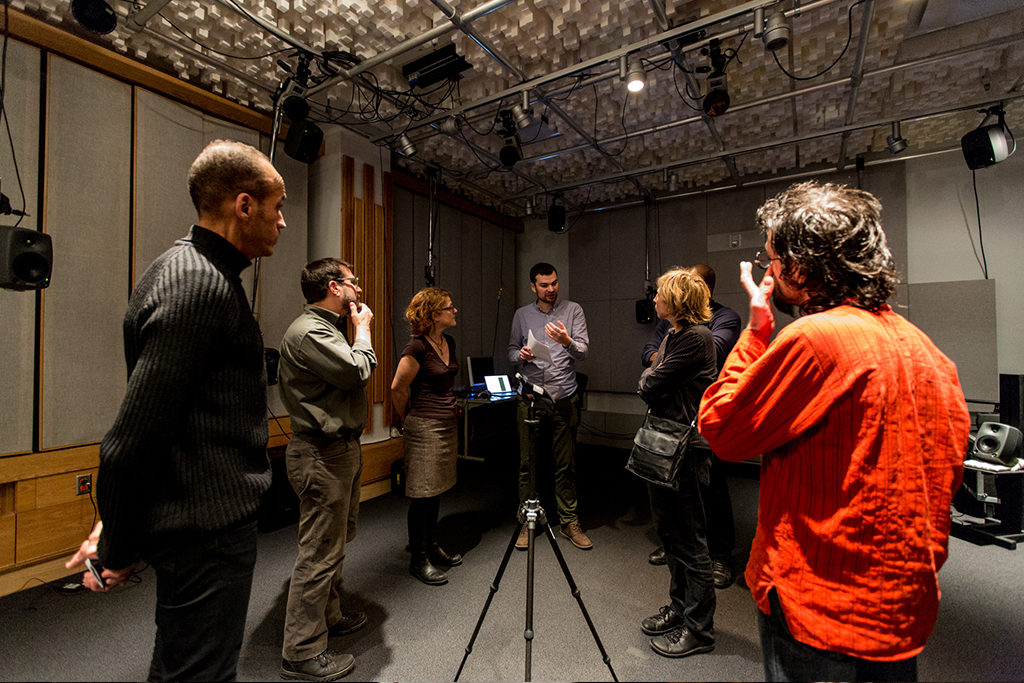
Sounds In The City: Are You Listening To The World Around You?
février 23, 2017 — Uncategorized
The next time you’re in a public space, close your eyes and listen to the world around you. You will likely discover a whole new aspect of the urban experience. This is what is called the soundscape. Soundscapes are composed of all the sounds around us, background and foreground, the sounds we hear and the ones we make.
In today’s cities, the focus is usually on sounds perceived as negative – what we generally refer to as “noise”. Sounds that are too loud or unpleasant may even pose threats to our health, productivity, and peace of mind. We often try to manage these unwanted sounds by designing special windows, noise barriers and hi-tech materials to drown out or attempt to cancel them.
Still, layered in the soundscape are also positive sounds that we rely on to navigate, give us a sense of place and connect us with our activities. Certain sounds may be very welcome in a bustling pedestrian zone filled with outdoor cafés and restaurants, but these same sounds may be unwelcome in a park where people go to escape the busy streets, relax or read a book. Therefore, context is a key component in how we define what is desired and undesired.

Sound management has traditionally focused on reducing noise levels, however, a quiet city is not necessarily an interesting or better one. The soundscape approach encourages positive sounds in urban environments while mitigating only unwanted sounds and necessitates planning the environment far in advance, rather than waiting for noise problems to arise. This approach is attracting the attention of many as an innovative and positive shift in the way we create, manage and control sound. It also necessitates more collaboration between planners, designers and sound experts to improve our urban spaces.
In November 2016, the ‘Sounds in the City’ team hosted a two-day workshop at McGill University in Montréal to test an innovative new collaboration between the academic, private and public sectors of Montréal. The two-day event, entitled “Sounds in the City: Animating Pedestrian Zones in the Sonic Dimension”, gathered 64 participants to focus on soundscapes and pedestrian zones.
Day one featured tours of three pedestrian zones in Montréal undergoing major renovations. These guided tours, led by knowledgeable city employees, gave participants an opportunity to experience the sites first-hand and to familiarize themselves with sound-related challenges in these environments.
On day two, soundscape experts from Canada, Germany, the United Kingdom and the Netherlands shared their research, knowledge and expertise. Speakers discussed best practices for soundscape, such as integrating water features to evoke nature sounds, enhance natural settings or mask unwanted noises. Speakers also presented projects, which use music and public art in urban spaces to positively affect the soundscape. This content served as the ‘building blocks’ for participants to broaden and deepen their knowledge about various aspects of sound in urban environments.

Attendees were divided into teams for co-design sessions focusing on the three Montréal pedestrian zones. City planners and architects responsible for the projects kicked off the session by providing overviews of each of the zones. Participants then had an opportunity to apply what they’d learned earlier in the ‘building blocks’ to case studies of these pedestrian sites in the city. Participants also experienced two sound demos: 1) an immersive soundscape simulator, which serves as an educational and design tool and 2) the visual and audio journey of a blind individual who relies on sound to navigate through public space on his daily commute.
The conference came to a close with presentations and a facilitated discussion, which brought together some of the day’s important themes and concluded with an optimistic outlook about the future potential of the soundscape approach. Instead of only calling upon sound experts to address sound issues once infrastructure decisions have already been made or structures built, cities can save time and money to make sound part of the conversation from day one. Encouraging more exploration of sound considerations during the early phases of the city’s planning and design processes can not only dramatically improve the design of urban environments, but it can also improve the general health and wellbeing of citizens.
Taking a more collaborative approach to designing our urban spaces will help create the kind of environments in which we want to live. Montréal is already on its way!

Please share your “ear-opening” experiences or questions with us at contact@sounds-in-the-city.org.